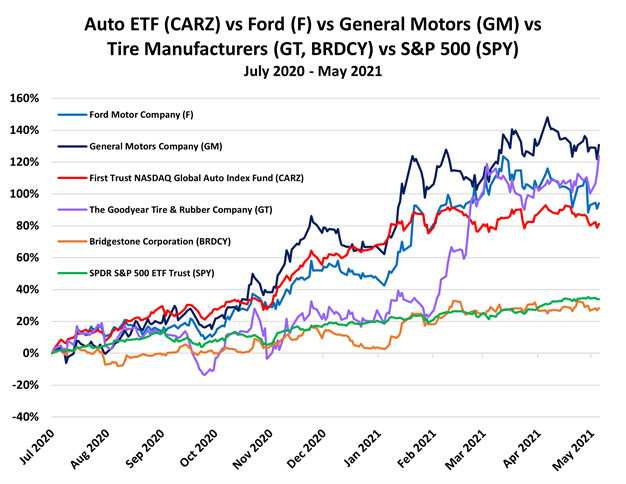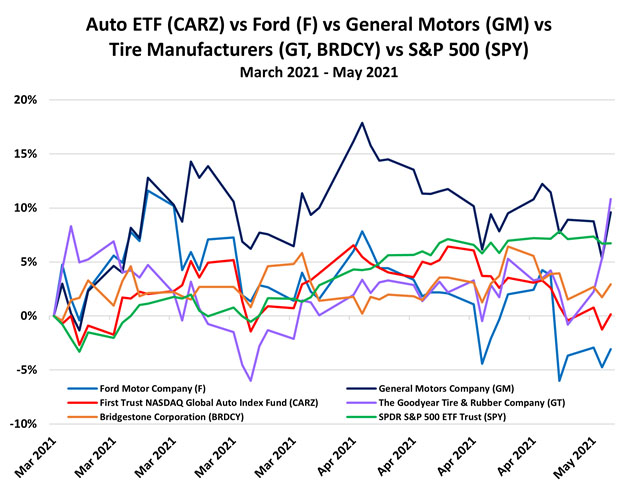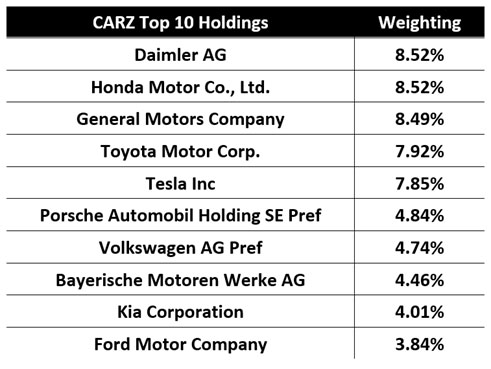Rubber Shortage A Rubber Shortage Poses a Threat in the Near Future
As if the automotive industry needed anything else on its plate, a natural rubber shortage poses an additional threat to the production of tires.
Natural rubber is harvested off of trees, so the material is greatly affected by weather related changes. In 2019, a leaf disease began to ravage major rubber producing countries like Thailand and Indonesia, depleting their levels of supply. In addition, lost automotive production resulting from the COVID-19 pandemic gave farmers little incentive to plant trees. It takes six to seven years for natural rubber trees to mature, so now that demand has come surging back, a rubber deficit is on the horizon.
Due to this, industry watchers are expecting this year to be the beginning of a cyclical, multiyear rally for the price of rubber. Through the first three months of 2021, the price of natural rubber rose 58%. Natural rubber reached a four-year high of $2/kg at the end of February, and some industry executives expect that number to jump to $5/kg in the next five years.
Bloomberg recently reported that excessive stockpiling in China has only added to the scarcity. China sourced over 5 million tons of the material in 2020, compared to the U.S. at 0.85 million tons, a worrying sign for domestic automakers.
Recent interviews with executives from Goodyear and Bridgestone suggest that domestic tire manufacturing is running as scheduled with a rubber supply that remains solid, for now. However, supply is very likely to tighten further into the year and should be monitored closely by investors.
Transitioning to EVs is More Complex Than Expected
To muddy the waters even further, the overwhelming transition toward a clean energy future has forced the automotive industry to ramp up the production and development of electric vehicles (EVs). The EV market is projected to reach $1.9 trillion by 2028, and every major automaker is trying to grab a share. The sudden shift leaves automakers scrambling to project how many new EVs they should manufacture, and how relevant gas-powered vehicles will remain in the future.
Big players have made some recent announcements to promote a cleaner transportation. General Motors has planned to phase out all of its gas-powered vehicles by 2035. Ford and BMW have positioned themselves to benefit from the transition by investing $130 million into a battery power startup, solidifying themselves in the EV market.
This projection could ultimately make or break some automotive companies. Bloomberg has said if the EV market climbs to 30% by 2030, it would leave 40 million excess vehicles for gas-powered cars, or roughly 200 unneeded factories. The transition toward EVs won't go up in a straight line either, as Business Insider recently reported 20% of EV owners in California have switched back to gas-powered cars, mostly due to inadequate charging infrastructure.
In short, if companies bet too big on EVs they will be left with excess inventory and a loss in revenue. If companies fail to invest enough, they will miss out on the huge profits of a massive shift in the industry.
Conclusion
The semiconductor shortage has no end in sight, and natural rubber's increasing scarcity is expected to hinder the industry even more. Trying to time the adoption of EVs to maximize profits proves to be an impossible task and only adds to the headwinds. The auto industry got through a tumultuous 2020 looking forward to 2021, but it appears this year will cause just as many headaches for automakers across the globe.
Investors can gain exposure to the automotive industry via First Trust NASDAQ Global Auto Index Fund (CARZ).



Originally published May 6, 2021.